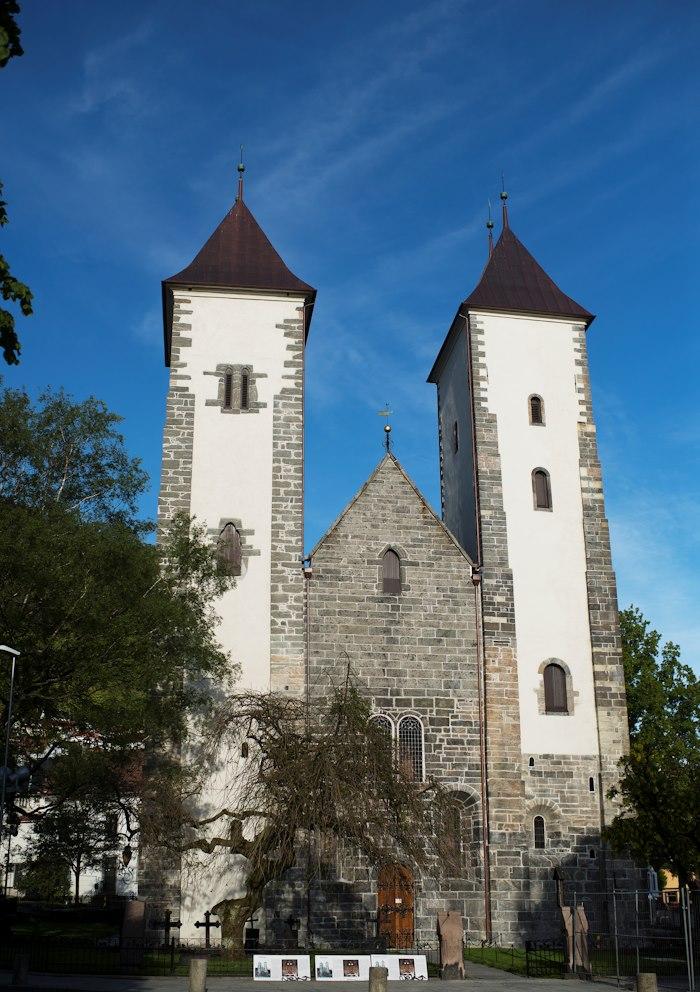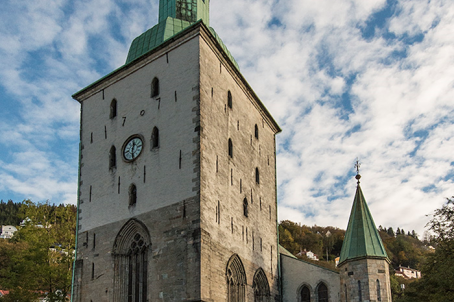St. Mary's Church
St. Mary's Church in Bergen is a long church in the form of a basilica. Inside, strong square pillars support the vaults and mark the transition between the nave and the aisles. The choir is lower and narrower than the nave. The church has two towers that rise above the western end of the aisles. The church was built in the classical Romanesque style in the first half of the 12th century, but there are also later additions in the Gothic style. The magnificent altarpiece was probably made in Lübeck in the late 15th century.
About this building
For more information visit on this building visit https://kirkesok.no/kirke/120100201






